December 15. DARJEELING to GANGTOK (SIKKIM) Our plan was to start our tour of Sikkim in the small town of Pelling, in the western region. The area offered close-up views of Mt. Kangchendzonga and a number of old monasteries. The jeeps for Sikkim left from the same jeep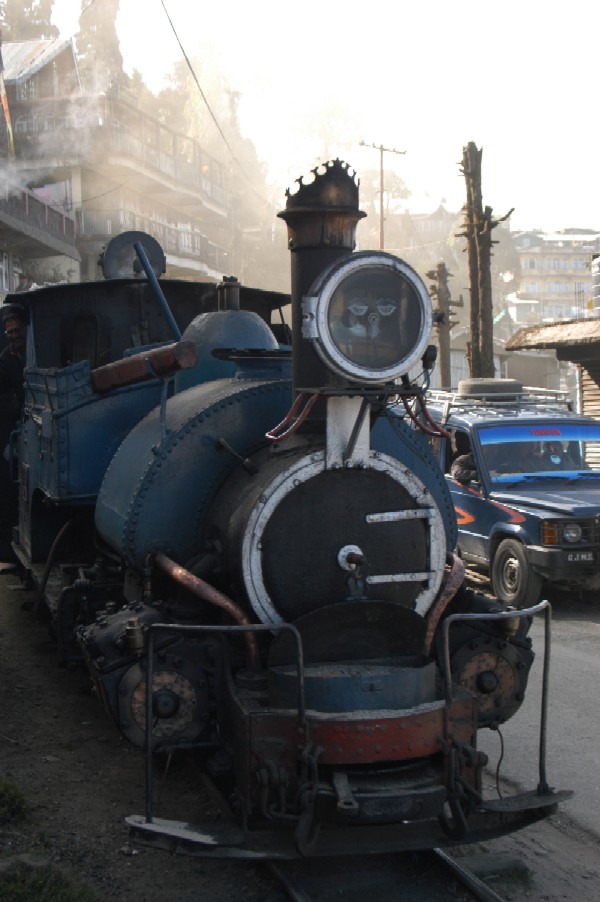 station at the bottom of Darjeeling and we found jeeps bound for Jorethang, a transfer point on the way to Pelling, but we couldn't find any direct jeeps. The guidebook warned that Pelling jeeps were harder to find so we signed up for the next available jeep to Jorethang and waited. There were only a couple of jeeps sitting in front of the ticket window and someone pointed us to the empty one so we started to load our bags. Then we were told it wasn't our jeep. Apparently our jeep hadn't arrived in Darjeeling yet but it would be arriving "soon". So, we waited. A line of jeeps that couldn't fit into the jeep station was stretched down Hill Cart Road. There were a number of different kiosks that sold tickets to different destinations. Each had its own quirky system of managing jeeps. We waited for our Jorethang jeep for over a half hour and then started to get impatient. The ride to Jorethang wasn't that far but we would probably have a similar wait when we got there so we started to wonder what time we would be getting into Pelling or, at worst, if we might get stuck in Jorethang. In the end, we changed our plans and decided to go Gangtok, the capital of Sikkim. There regular direct jeeps to Gangtok and we were able to refund our Jorethang tickets and get tickets on a scheduled jeep leaving in about an hour. The kiosk selling the Gangtok tickets were nice enough to let us put our bags in the back until it was time for o station at the bottom of Darjeeling and we found jeeps bound for Jorethang, a transfer point on the way to Pelling, but we couldn't find any direct jeeps. The guidebook warned that Pelling jeeps were harder to find so we signed up for the next available jeep to Jorethang and waited. There were only a couple of jeeps sitting in front of the ticket window and someone pointed us to the empty one so we started to load our bags. Then we were told it wasn't our jeep. Apparently our jeep hadn't arrived in Darjeeling yet but it would be arriving "soon". So, we waited. A line of jeeps that couldn't fit into the jeep station was stretched down Hill Cart Road. There were a number of different kiosks that sold tickets to different destinations. Each had its own quirky system of managing jeeps. We waited for our Jorethang jeep for over a half hour and then started to get impatient. The ride to Jorethang wasn't that far but we would probably have a similar wait when we got there so we started to wonder what time we would be getting into Pelling or, at worst, if we might get stuck in Jorethang. In the end, we changed our plans and decided to go Gangtok, the capital of Sikkim. There regular direct jeeps to Gangtok and we were able to refund our Jorethang tickets and get tickets on a scheduled jeep leaving in about an hour. The kiosk selling the Gangtok tickets were nice enough to let us put our bags in the back until it was time for o ur jeep to leave. ur jeep to leave.
With some time to kill we went to a fast-food style eatery just inside the large Chowk Market. The market was a lively place where you could buy all sorts of goods from small wooden shacks that were crammed down narrow streets and alleys. As it got closer to our departure time we went in search of a toilet but had absolutely no luck. All around the jeep station we asked shopkeepers where we could find a toilet but only got shrugs. It was hard to imagine that there was no place for people to go to the bathroom all day long. Finally the guys at our jeep kiosk pointed me down the street to a restaurant. They said there was a place just behind it. I tried to follow their directions and circled around the restaurant and even asked inside but just got more shrugs. There were small shacks clustered everywhere so perhaps somebody had a toilet but nobody would give them up. It was frustrating. I returned to the jeep station and it was already time to load up so I was faced with just holding it until we made a stop along the way. Sigh....
We bought out the back four seats which, in this case, were two small benches that faced each other. It was easy to get in via the back door but even with just two of us it wasn't especially roomy. We staggered ourselves so we stretch our legs out a bit and set our day packs next to us. Gradually the rest of the jeep filled up and we were off. The jeep left town via a road at the top of the ridge so we zigged and zagged our way up through Darjeeling on the streets designated for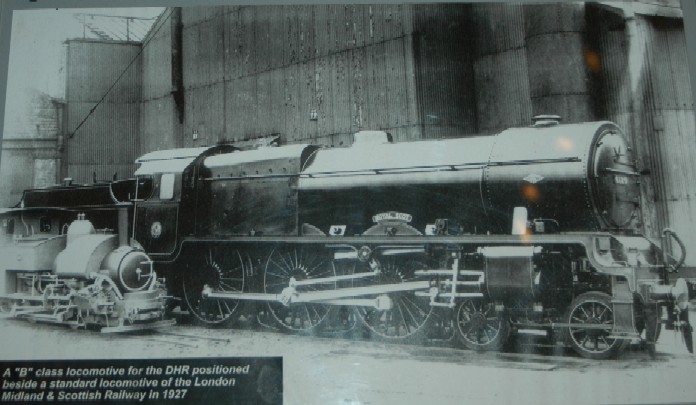 automobile traffic but before we pulled out of town the jeep made a stop in front of a small hotel. A young guy squished in the middle seat got out. While we were waiting I noticed a bathroom just inside the front door and made a run for it. When I returned I saw the young guy was being replaced by an older man, the hotel's guest. The younger guy had been the place holder. automobile traffic but before we pulled out of town the jeep made a stop in front of a small hotel. A young guy squished in the middle seat got out. While we were waiting I noticed a bathroom just inside the front door and made a run for it. When I returned I saw the young guy was being replaced by an older man, the hotel's guest. The younger guy had been the place holder.
The jeep passed over the top of the ridge and started on its way down the steep hillside. The road was narrower, curvier, and not as well maintained as the road we'd taken up from Siliguri. It was a single-lane road with better views of the mountains and the never-ending landscape of tea bushes, as well as the steep drops! Sitting in the back of the jeep on those turns started to test the strength of my stomach. I worked hard on looking at the road while trying to ignore the steep drops. The women sitting in front of me was having a worse time of it but was taking the opposite approach to the problem by hiding her head in her arms. It didn't feel like we had been on the road too long when we came to a rest stop at a small cluster of homes. In their out of the way location these people made a living by selling food and offering car washes. Water ran down the street from a hose and jeeps periodically pulled over for a quick scrub down. They had a convenient set of toilets as well. It felt good to get out and stretch our legs while my stomach settled down. The women in front of me ended up getting sick.
Back in the jeep there was a faint small of vomit from the woman in front me. Fortunately the worst of the twists and turns was nearly over. It wasn't much longer before the road bottomed out at a river. We traversed along the hills for a bit before we crossed a bridge and stopped at the permit che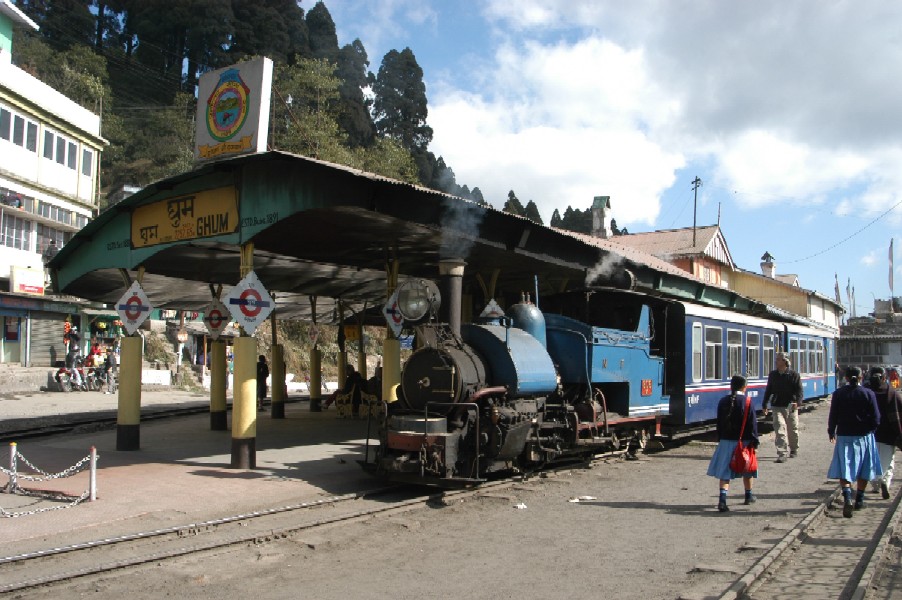 ckpoint in Rangpo. Reluctantly leaving our bags in the back of the jeep we jumped out and ran into the office where a very unenthusiastic official methodically copied our names into a book and stamped the permit in our passports. The locals didn't have to undergo the permit check and waited patiently for us to complete the process. From Rangpo we soon started to head up hill but this time on a wider road. There were still plenty of turns but they were more smoothly navigated by our driver and we had to compete with more traffic which slowed us down. As we made the steady ascent to Gangtok people gradually started to get out of the jeep. For a while I maintained the feeling that we must almost be there. The buildings that densely lined the roadway made me feel as though we were entering Gangtok but we were actually still in neighboring towns. It all seemed to connect seamlessly into one mini-metro area but finally we came to a much busier area and the buildings got taller. The jeep pulled into a station housed in an under ground parking garage. ckpoint in Rangpo. Reluctantly leaving our bags in the back of the jeep we jumped out and ran into the office where a very unenthusiastic official methodically copied our names into a book and stamped the permit in our passports. The locals didn't have to undergo the permit check and waited patiently for us to complete the process. From Rangpo we soon started to head up hill but this time on a wider road. There were still plenty of turns but they were more smoothly navigated by our driver and we had to compete with more traffic which slowed us down. As we made the steady ascent to Gangtok people gradually started to get out of the jeep. For a while I maintained the feeling that we must almost be there. The buildings that densely lined the roadway made me feel as though we were entering Gangtok but we were actually still in neighboring towns. It all seemed to connect seamlessly into one mini-metro area but finally we came to a much busier area and the buildings got taller. The jeep pulled into a station housed in an under ground parking garage.
The Gangtok jeep station was far less hectic than the jeep station in Darjeeling but the city itself looked more built up, or at least more newly built up. It only held about one quarter of Darjeeling's population and when compared with Darjeeling's somewhat ramshackle appearance, Gangtok had a more sterile and non-descript personality. It also hung on the side the Himalayan hills but at a lower elevation of 5500 feet, which immediately made it feel warmer. As we pulled our bags off of the jeep we were soon confronted with hotel and tour tout, an unexpected annoyance. We were farther out than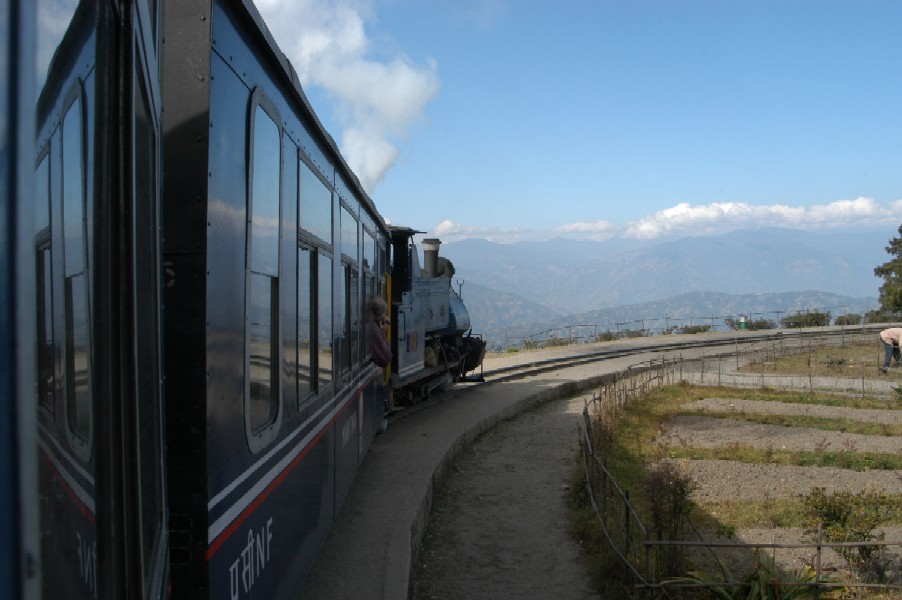 Darjeeling and suddenly the hassles had increased. I stood with our bags while Rob went to call a hotel. The touts still continued to come by but I just ignored them. Rob was able to quickly get a reservation but it involved a steep climb up a long set of stair across from the jeep station. My knees were wobbling by the time we reached the top. From the stairs it was another 100 yards to the Hotel Golden Pagoda. From the beginning there was something we didn't really like about the place, starting with the rude guy at the front desk. It came recommended but was suffering from having gotten a bit too full of itself. They only had a large double available, which was still small for the price, so we asked when the a smaller double was scheduled to free up. On the phone they had said we could change when the smaller room was available but now the clerk was evasive. He apparently had no idea when people were checking out. We were tired and didn't want to walk around to check out other hotels. We had chosen this hotel because it seemed like a reliable choice so we decided to just stay for the night. Our room was on the top floor and did have a view out towards the mountains but it was cramped and turned out to be below the kitchen, which was noisy. They sent room service around to ask what we wanted for dinner but we ate out. Darjeeling and suddenly the hassles had increased. I stood with our bags while Rob went to call a hotel. The touts still continued to come by but I just ignored them. Rob was able to quickly get a reservation but it involved a steep climb up a long set of stair across from the jeep station. My knees were wobbling by the time we reached the top. From the stairs it was another 100 yards to the Hotel Golden Pagoda. From the beginning there was something we didn't really like about the place, starting with the rude guy at the front desk. It came recommended but was suffering from having gotten a bit too full of itself. They only had a large double available, which was still small for the price, so we asked when the a smaller double was scheduled to free up. On the phone they had said we could change when the smaller room was available but now the clerk was evasive. He apparently had no idea when people were checking out. We were tired and didn't want to walk around to check out other hotels. We had chosen this hotel because it seemed like a reliable choice so we decided to just stay for the night. Our room was on the top floor and did have a view out towards the mountains but it was cramped and turned out to be below the kitchen, which was noisy. They sent room service around to ask what we wanted for dinner but we ate out.
The main road through Gangtok was Mahatma Gandhi (MG) Marg, which was an immediate indication of Gangtok's Indification. Sikkim was an independent country for over 200 years but its unique history has ultimately landed in the hands of the Indian government. The region was originally inhabited by the Lepchas, a people of Tibeto-Burmese origin who are thought to have come to the area in the 13th century. The Lepcha script is still commonly seen in Sikkim. Tibetans began migrating to Sikkim in the 15th century and it was three lamas from the Nyingmapa sect that were responsible for consecrating the first chogyal (king) of Sikkim in Yoksum (western Sikkim) in 1641. Mahayana Buddhism is still the stat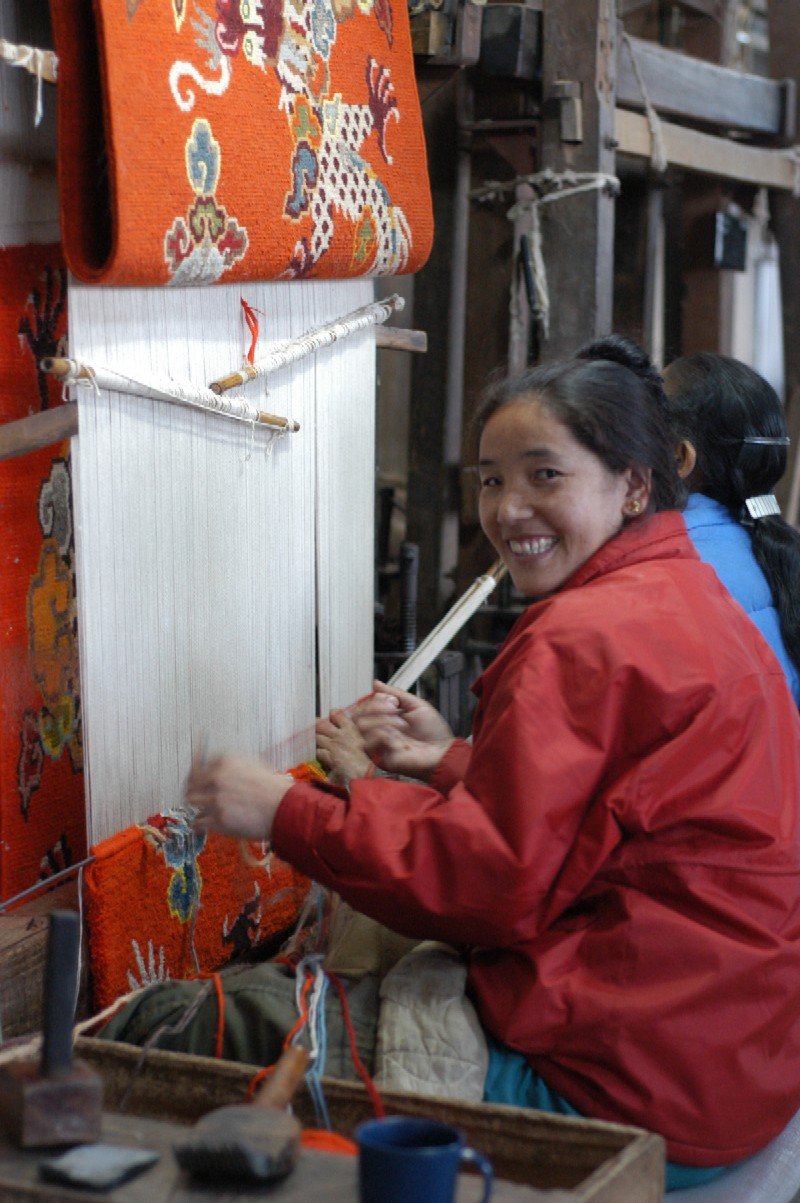 e religion. At one point the little kingdom reached west into eastern Nepal, north into Tibet, east into Bhutan, and south into parts of West Bengal but it lost some areas in battles with the Bhutanese and Nepalese Ghurkhas. In 1835 the British persuaded the chogyal to give up the Darjeeling area to the British East India Company in return for an annual stipend but the agreement was challenged by Tibet and some Sikkimese. Tensions increased until the British annexed the whole area and declared it a protectorate in 1861. Tibet considered Sikkim a vassal state and invaded in 1886 but was brutally repulse by the British. In 1947 Sikkim passed to India at Independence but was still ruled by a choygal. The last choygal ascended the throne in 1963 but failed to deal with complaints from the Nepalese population and eventually asked India to take over the country's administration. A 1975 referendum voted 97% in favor of unification with India but there is still much whispering over the integrity of those results. Neighboring China still doesn't recognize Sikkim as part of India. Consequently, the Indian government has invested a great deal into roads, electrification, water supply, and local industry in Sikkim to stake its claim. e religion. At one point the little kingdom reached west into eastern Nepal, north into Tibet, east into Bhutan, and south into parts of West Bengal but it lost some areas in battles with the Bhutanese and Nepalese Ghurkhas. In 1835 the British persuaded the chogyal to give up the Darjeeling area to the British East India Company in return for an annual stipend but the agreement was challenged by Tibet and some Sikkimese. Tensions increased until the British annexed the whole area and declared it a protectorate in 1861. Tibet considered Sikkim a vassal state and invaded in 1886 but was brutally repulse by the British. In 1947 Sikkim passed to India at Independence but was still ruled by a choygal. The last choygal ascended the throne in 1963 but failed to deal with complaints from the Nepalese population and eventually asked India to take over the country's administration. A 1975 referendum voted 97% in favor of unification with India but there is still much whispering over the integrity of those results. Neighboring China still doesn't recognize Sikkim as part of India. Consequently, the Indian government has invested a great deal into roads, electrification, water supply, and local industry in Sikkim to stake its claim. |

